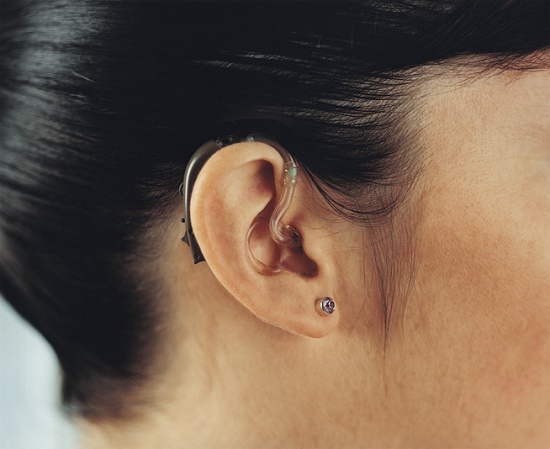
Have you ever had problems hearing in a congested room or restaurant but can hear without any problem at home? Do you have particular challenges hearing higher-pitched voices or TV dialogue?
If so, you might have hearing loss, and hearing aids may be able to help.
But how exactly do hearing aids work? Are they basic amplifiers, or something more complex?
This week we’ll be evaluating how hearing aids work and how they are a bit more advanced than many people recognize. But first, let’s start with how normal hearing works.
How Normal Hearing Works
The hearing process starts with sound. Sound is essentially a kind of energy that travels in waves, like ripples in a pond. Things produce sound in the environment when they generate vibrations in the air, and those vibrations are eventually captured and transferred to the ear canal by the outer ear.
Immediately after passing through the ear canal, the sound vibrations hit the eardrum. The eardrum then vibrates, creating and amplifying the original signal which is then transferred by the middle ear bones to the snail-shaped organ of the middle ear called the cochlea.
The cochlea is filled with fluid and small nerve cells called cilia. The vibrations transported from the middle ear bones agitate the fluid and stimulate the cilia. The cilia then transmit electrical signals to the brain and the brain interprets those signals as sound.
With most cases of noise-induced hearing loss, there is injury to the cilia. Consequently, the arriving signal to the brain is weaker and sounds seem softer or muffled. But not all frequencies are equally weakened. Typically, the higher-pitched sounds, including speech, are impacted to a greater extent.
In a loud setting, like a restaurant, your capacity to hear speech is compromised because your brain is obtaining a compromised signal for high-frequency sounds. Simultaneously, background noise, which is low-frequency, is getting through normally, drowning out the speech.
How Hearing Aids Can Help
You can understand that the solution is not simply amplifying all sound. If you were to do that, you’d just continue drowning out speech as the background noise becomes louder in proportion to the speech sounds.
The solution is selective amplification of only the sound frequencies you have difficulty hearing. And that is only achievable by having your hearing professionally tested and your hearing aids professionally programmed to magnify these particular frequencies.
How Hearing Aids Selectively Amplify Sound
Contemporary hearing aids contain five internal parts: the microphone, amplifier, speaker, battery, and computer chip. But hearing aids are not just simple amplifiers—they’re sophisticated electronic devices that modify the attributes of sound.
This happens by way of the computer chip. Everyone’s hearing is distinct, like a fingerprint, and so the frequencies you need amplified will vary. The amazing part is, those frequencies can be determined precisely with a professional hearing test, technically known as an audiogram.
Once your hearing professional has these figures, your hearing aid can be custom-programmed to amplify the frequencies you have the most difficulty with, maximizing speech recognition in the process.
Here’s how it works: the hearing aid receives sound in the environment with the microphone and transmits the sound to the computer chip. The computer chip then converts the sound into digital information so that it can differentiate between assorted frequencies.
Then, based upon the programmed settings, the high-frequency sounds are amplified, the low-frequency background sounds are repressed, and the enhanced sound is directed to your ear via the speaker.
So will your hearing go back perfectly to normal?
While your hearing will not totally go back to normal, that shouldn’t prevent you from acquiring substantial gains in your hearing. For most people, the amplification provided is all they need to comprehend speech and indulge in productive and effortless communication.
Think about it in this way. If your eye doctor told you they could enhance your vision from 20/80 to 20/25, would you forfeit prescription glasses because you couldn’t get to 20/20? Of course not; you’d be able to function perfectly with 20/25 vision and the gain from 20/80 would be considerable.
Are you set to find out the improvements you can achieve with contemporary hearing aids? Give us a call today!
